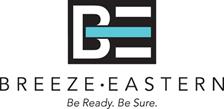Management’s Discussion and Analysis of Financial Condition and Results of Operations
($ In Thousands Except Share Amounts)
Engineering expenses were $3,742 in the first six months of fiscal 2016 compared with $4,046 in the first six months of fiscal 2015. Fiscal 2015 included to one-time costs of $288 associated with an internal reorganization.
Income tax provision. Income tax expense was $2,885 in the first six months of fiscal 2016 versus $281 in the first six months of fiscal 2015. The increase is due to higher pre-tax income due primarily to higher gross profit and lower SG&A and engineering expenses. Income taxes for the six month periods ended September 30, 2015 and September 30, 2014 were computed using the effective tax rates of 35.2% and 37.0%, respectively, estimated to be applicable for the full fiscal year, which is subject to ongoing review and evaluation. Income taxes and income tax rates are discussed further in Note 8 of the “Notes to Unaudited Condensed Consolidated Financial Statements” contained in Part I, Item 1 of this report.
Net Income. Net income was $5,309, or $0.53 per diluted share, in the fiscal 2016 first six months compared with $478, or $0.05 per diluted share, in the same period in fiscal 2015. The increase in net income is mainly due to higher volume and margins of new production and spare parts and lower operating expenses. Excluding the executive transition costs of $593, the costs associated with an internal re-organization of $288 and the benefit from the environmental reserve reduction of $412 recorded during the first six months of fiscal 2015, and the related tax effects, the net income would have been $774, or $0.08 per diluted share.
New Orders. New products and services orders received during the six months ended September 30, 2015 increased 23.9% to $52,874 compared with $42,658 during the six months ended September 30, 2014. The increase was due primarily to higher orders from the U.S. Government.
Backlog
The book to bill ratio for the first six months of fiscal 2016 was 1.2, same as for the first six months of fiscal 2015. Cancellations of purchase orders or reductions of product quantities in existing contracts, although seldom occurring, could substantially and materially reduce our backlog. Therefore, the backlog may not represent the actual amount of shipments or sales for any future period.
Liquidity and Capital Resources
Our principal sources of liquidity are cash on hand, cash generated from operations, and our Revolving Credit Facility.
Our liquidity requirements depend on a number of factors, many of which are beyond our control, including the timing of production under contracts with the U.S. Government. Our working capital needs fluctuate between periods as a result of changes in program status and the timing of payments by program. Additionally, because sales are generally made on the basis of individual purchase orders, liquidity requirements vary based on the timing and volume of orders. Based on cash on hand, future cash expected to be generated from operations, and the Revolving Credit Facility, we expect to have sufficient cash to meet liquidity requirements for the next twelve months and foreseeable future.
Our Revolving Credit Facility provides us with a $20,000 unsecured revolving line of credit with an accordion feature that, under certain conditions and circumstances may increase to $35,000. We believe we have adequate cash flow and debt availability to meet our operating needs. The Revolving Credit Facility is discussed in Note 9 of the “Notes to Unaudited Condensed Consolidated Financial Statements” contained in Part I Item 1 of this report.
We are involved in environmental proceedings and potential proceedings relating to soil and groundwater contamination and other environmental matters at several of our former parent company’s facilities that were never required for our current operations. In fiscal 2016, we anticipate spending approximately $2,387 on environmental characterization and remediation costs. These costs will be charged against our environmental liability reserve and will not impact income.
Our cash was $23,809 on September 30, 2015, compared with $22,806 on March 31, 2015, an increase of $1,003. The increase in our cash is primarily the net result of positive cash flows provided by operating activities of $1,139.
Cash flows provided by operating activities during the first six months of fiscal 2016 amounted to $1,139 and is mainly the result of net income of $5,309, a decrease in accounts receivable of $3,999 due to the collection of receivables resulting from high fiscal 2015 fourth quarter sales, a decrease in deferred taxes of $981 due to utilization of the research and development tax credit, depreciation and amortization of $799, and stock based compensation of $451. This was partially offset by an increase in inventory of $6,672 that was purchased for forecasted shipments of equipment, a decrease in accrued income taxes of $2,124 and a decrease in accrued compensation of $1,001 due to the payment of incentives.
Cash flows used in investing activities in fiscal 2016 was $779, and was used for capital expenditures mainly for equipment and the office space build-out in our product development center in Fredericksburg, Virginia.
